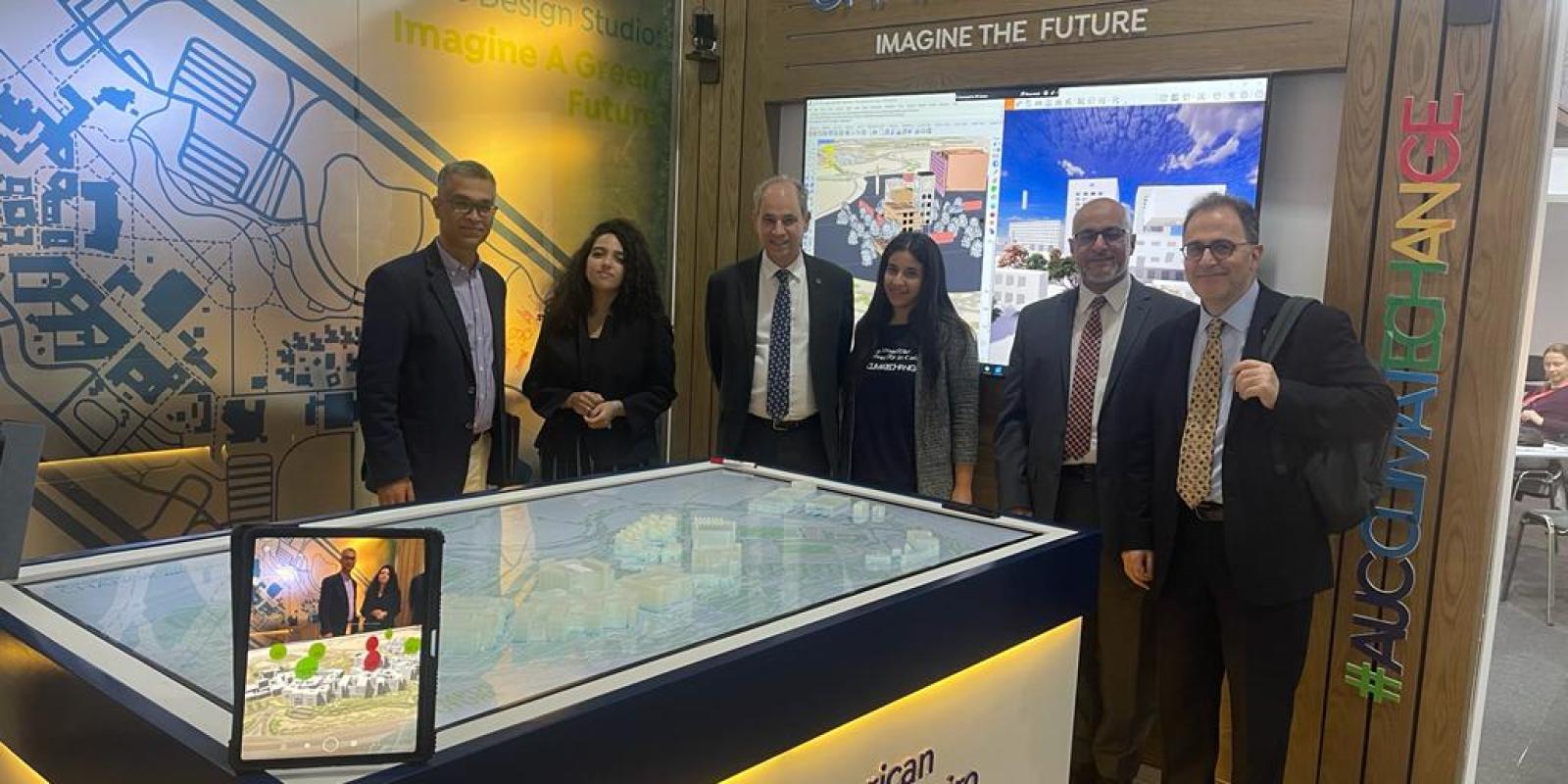
AUC Unveils a New Climmersive Design Studio at COP27
The American University in Cairo (AUC) introduced the first-of-its-kind Climmersive Design Studio in Egypt in its pavilion at COP27 in Sharm El Sheikh. The design studio is a pioneering prototype for architectural education, introducing a climate change simulation program and design that combines traditional 2D architectural design with immersive and 3D technology.
As part of the educational experience at AUC, the Climmersive Design Studio uses the New Cairo campus as a model where students can envision future architectural expansion from a climate-conscious perspective. Using the new technology, students can use 3D immersive virtual reality technology to assess the environmental impact of their traditional 2D design instantly. The studio aims to raise students’ environmental awareness and help them make climate-conscious decisions.
This technology was the result of the cross-disciplinary efforts of AUC faculty experts in climate change, sustainability, digital design, computation and mixed reality.
Khaled Tarabieh, University Architect, associate professor of sustainable design and chair of AUC’s COP27 Task Force, who is the co-founder of the studio said: “We can imagine a green future through architectural design by revamping the traditional architectural design studio —coupling traditional 2D design with 3D platforms, which allows us to merge simulation and virtual reality immersion.”
On display at AUC’s Pavillion at COP27 is a 2D layout sketching map of AUC New Cairo campus to showcase the traditional way of design. Using VR, visitors can embark on an immersive architectural experience of the new campus designs.
Sherif Abdelmohsen, associate professor of digital media and design computing in architecture, associate chair of the Department of Architecture and the co-founder of the Climmersive Design Studio said: “This interdisciplinary mode allows students to benefit from the green architecture studio by raising their environmental awareness and allowing them to express their ideas and concepts through this new immersive VR technology.”
Abdelmohsen said students could model their designs on the fly in real time. “For example, if they embed a building with a negative impact on the environment, they immediately see the impact. Students then can act positively to mitigate it and perhaps introduce elements of plantation, trees or solar screens on the building, see the effect in real time and monitor the increase or reduction in carbon emissions,” he added.
Traditionally, students would not get instant feedback on their designs, as he explained, however, the new design studio enables them to make informed environmental decisions.
“The traditional setups where they work with 2D sketching won’t go away, but the premise here is that students will also engage in a more immersive and dynamic environment,” said Abdelmohsen.
AUC opened its 100-meter square pavilion (P-22) in the Green Zone of COP27, the world’s largest climate conference, in Sharm El Sheikh International Convention Center, with a team of more than 130 members, including AUC scholars, students and several staff members. The pavilion includes innovative and sustainable technologies prototypes that showcase AUC’s solutions to combat climate change, in addition to poster and screen areas that show the University’s current research to contribute to finding solutions for a number of challenges in Egypt. AUC is also showing case studies, leading by example and primarily disseminating its knowledge and innovative strategies through stage presentations of AUC’s faculty, students and staff research.
The 10-day AUC Green Zone of COP27 program encompasses a wide range of activities, spanning all schools and the majority of disciplines.
Visit AUC’s climate change initiative website, a hub aggregating the University’s work along five areas of focus: water scarcity, energy transition, green finance, urban development and public health.